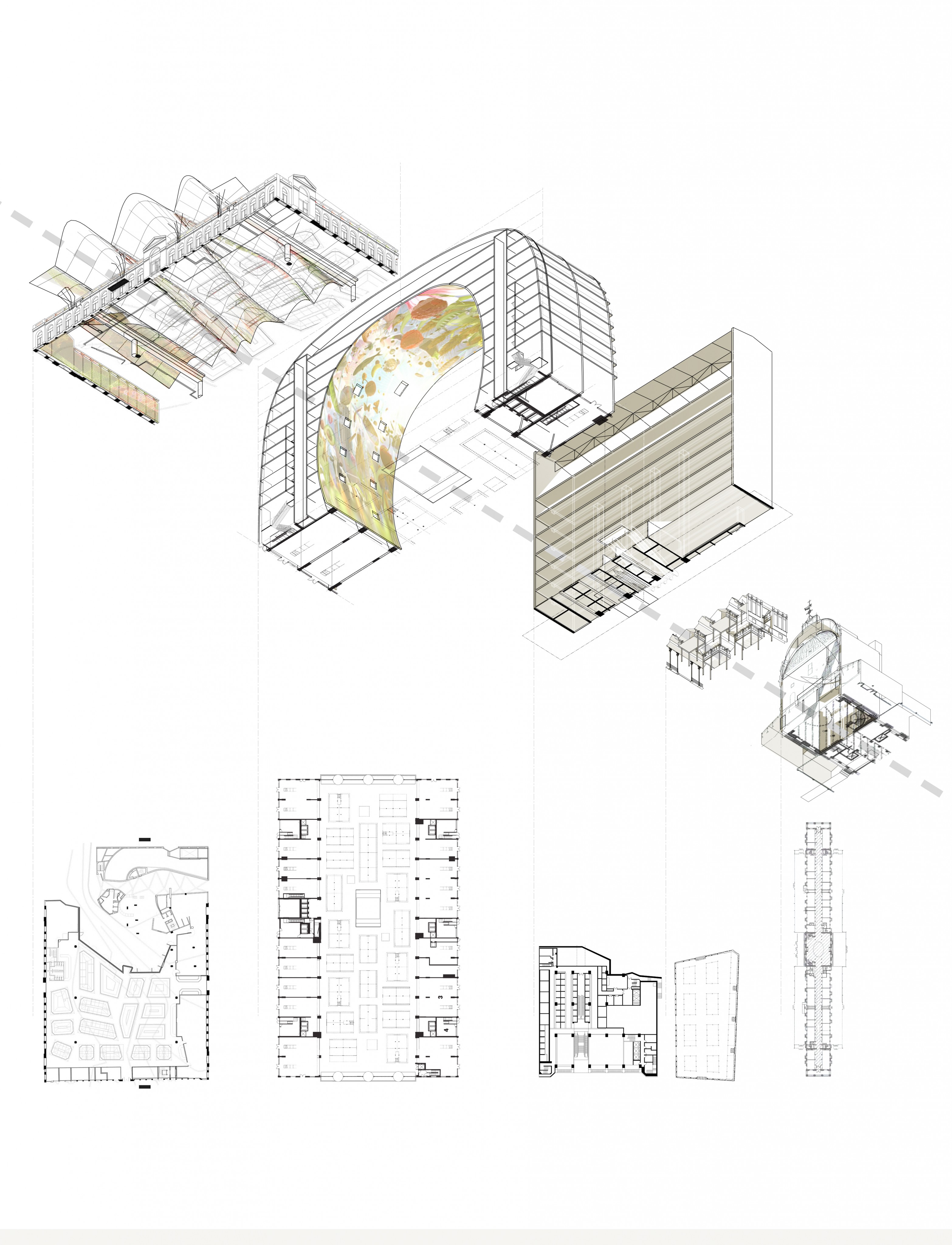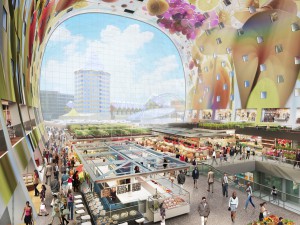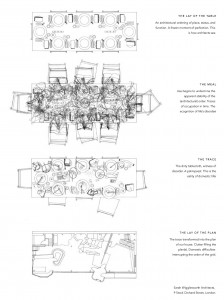Urban Dining Theatre
|
The thesis explores the food and social relations as well as the theatrical phenomena when food and architecture juxtapose. Market as a collective food space, it shall not remain as a place of business, rather a social, cultural, exhibiting space. WHY It seems that a simple market could no longer serve a city good enough, it is not in terms of efficiency but in terms of its performative characteristics. Namely, the renovated Santa Caterina Market is covered with a vivid curtain of ceramic with dashing colors; MVRDV’s market hall not only bold in appearance, but also sustainably combined food with leisure and living overarching on top, conceived as an inversion of a typical market square and its surrounding buildings. The National Wholesale Market at Rungis was the very first model of a modernized market accompanied with a complete set of restaurants and gardens. In both appearance and programatic arrangement, the development of market has shown a tendency of ostentation, multiplicity and gigantism. The phenomena could be traced to the performative characteristics of domestic culinary space that the preparation and consumption of a meal imply. According to Kirshenblatt-Gimblett, the performance of food space encompasses social practices. This leads to Pierre Bourdieu’s habitus of everyday life, which suggests “food events move towards the theatrical” when participants discerning and appreciating. The thesis sees the morphology of the market is manifestation of the urban condition, where dwellers are awaiting the opportunity to participate in the food processing. Market as a social practice of distributing food, is also a theatre for local culture and social. There ostentation of contemporary market is the exaggerated habits of everyday life. WHAT The proposed site would be the Western Wholesale Food Market, where the government is proposing a brand new coastal park. The western district has been eminent for the dried food and the vivid neibourhood, which are diminishing due to the intrusion of rapid development in the area. Instead of a generic green belt, the thesis propose the continuation of the market, which would further extend and perform. Hong Kong is set as a testing ground as dining out has become a majority habit. Despite of the convenience (especially for single dwellers), the common reason is the lack of space at home. Through out the evolution of Urban Housing, dwellers could barely afford 14m2 of living space per person in Hong Kong. The space of the flat could barely fit in basic furnitures and leaving no space for dining nor other activities. Dining out seems to be the only way out. With the fragmentation of basic dwelling functions of residential units, a collective, conglomerate gastronomic quarters is in need to compensate the casualties from this intense city. In the epoch of single dwelling and subdivided units, which home is only the place for rest, the thesis suggests gastronomic space as a communal shelter, where families unite and strangers enjoying the performance of the culinary culture together. Local food stall, dried seafood market, snacks on the streets… a taxonomy of food is await to be preserved and unpacked. HOW Medium: drawing
BIBLIOGRAPHY THEORY Debord, Guy, “Situationist International Manifesto” (1960) 172-74. In Ulrich Conrads, Programmes and manifestoes on 20th-century architecture, tr Micheal Bullock. Cambridge, Ma: MIT Press, 1970 Hughes, Jonathan, and Simon Sadler. Non-plan: Essays on Freedom Participation and Change in Modern Architecture and Urbanism. Oxford: Architectural Press, 2000. Print. SEMINAL/ CURRENT RELATED Tenhoor, Meredith. “Degree, Design, Exhibit, Consume. Making Modern Markets in France, 1953-1979.” Governing by Design Architecture, Economy, and Politics in the Twentieth Century. Pittsburgh: U of Pittsburgh, 2012. Print. Franck, Karen A. “The City as Dining Room, Market and Farm.” Architectural Design Archit Design: 5-10. Print. Cody, Jeffrey W, and Mary C Day. “The City as Dining Room: Big-Sign Dining in Hong Kong.” Architectural Design Archit Design: 60-65. Print. Parham, Susan. “Designing the Gastronomic Quarter.” Architectural Design Archit Design: 86-95. Print. |



